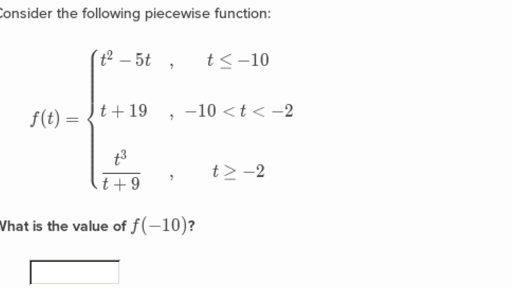What is the equation of the line that has a slope of 2 and goes through the point (2,3)?
y-3=2(x-2)
y-3=2x-4
y=2x-1
Is the following relation a function?
{(-1,3), (0,4), (0,5), (1,6), (2,7), (3,8)}
Why or Why not?
No, because the x value of 0 is matched with two different y values, 4 and 5. (This would not pass the vertical line test)
Let f(x)=x+2 and g(x)=x-2
What is (f+g)(x)?
f(x)+g(x)
(x+2) + (x-2)
2x
What is the domain of y=x in interval notation?
(- inf, inf)
Let f(x)= 1/x and g(x)= x+3
What is (f o g)(x)?
f(g(x))
f(x+3)
1/(x+3)
Domain restriction: x can NOT = -3
What is the slope of a horizontal line?
Does the following equation represent y as a function of x?
3x^2 - y = 10
yes.
y=3x^2 - 10
Let f(x)=3x+5 and g(x)= 5-x
What is (f-g)(x)?
f(x)-g(x)
(3x+5) - (5-x)
3x+5 - 5 +x
4x
What is the domain of y=3x^2 + 9 in interval notation?
( - inf, inf)
Let f(x)= square root (x+4) and g(x)= 5-x
What is (f o g)(x)?
f(g(x))
f(5-x)
square root ( 5-x + 4)
square root (9-x)
Domain restriction: x< or = 9
What is the equation the line that is parallel to 2x+3y=9 and goes through the point (6,-4)?
m=-2/3
y-(-4)=-2/3(x-6)
y+4=-2/3 x +2
y= -2/3 x -2
Does the following represent a function?
2y^2 + x^2 - 3 =0
y= (+-) square root( -1/2 x^2 +3/2 )
Let f(x)=x^2 + x + 3 and g(x)= 2x-1
What is (f*g)(x)?
f(x)*g(x)
(x^2 + x + 3)(2x - 1)
2x^3 - x^2+2x^2 - x +6x -3
2x^3 + x^2 +5x - 3
What is the domain of y= square root (x-13) in interval notation?
x > or = 13
Let f(x) = 3/ (x^2 - 1) and g(x)= x+1
What is (f o g)(x)?
f(g(x))
f(x+1)
3/ ( (x+1)^2 -1 )
3/ (x^2 +2x+1 -1)
3/ (x^2 +2x)
Domain restriction: x> or = 0 and x< or = -2
What is the slope of a vertical line?
m= undefined
Let f(x)= x^2 + 4x - 10
What is the value of f(3)?
f(3)= 3^2 + 4(3) - 10
f(3)= 9+12-10
f(3)= 11
Let f(x)=5x-3 and g(x)= 1/x
What is (f*g)(x)?
*Determine the domain restriction*
f(x)*g(x)
(5x-3)*(1/x)
(5x-3)/x
Domain restriction: x can NOT = 0
What is the domain of y= (3x+2)/ (x^2+3x-10)?
All real numbers except x can NOT = -5 and 2
OR (-inf, -5) U (-5, 2) U (2, inf)
Let f(x) = x^3 and g(x)= 3x-1
What is (f o g)(1)?
f(g(1))
f(3(1)-1)
f(3-1)
f(2)
2^3
8
Write the equation of the line that goes through the points (0,-1) and (5,9).
m=2
y-(-1)=2(x-0)
y+1=2x
y=2x-1
(-10)^2 - 5(-10)
100 + 50
150
Let f(x)= square root (4x) and g(x)=x-2
What is (f/g)(x)?
*Determine the domain restriction*
f(x)/g(x)
square root (4x) / (x-2)
4x > or = 0
x > or = 0
AND x can NOT = 2
What is the domain of
y= square root (x) / square root (x-14)?
(top) x> or = 0
(bottom) x>14
Domain: x>14
Let f(x)= x^(2/3) and g(x)= x^3
What is (f o g)(6)?
f(g(6))
f(6^3)
(6^3)^(2/3)
6^2
36
